I recently bought a multi-cooker that has been a great time-saver in my daily cooking routine. I plan to use it to prepare pressure cooker pork ribs, which involve browning, braising, and thickening the gravy. I’d like to see how efficiently it can handle all these steps.
I have shared a few Chinese braised pork rib recipes on this blog, which I prepared on the stovetop. It will be interesting to see how the results of pressure cooker pork ribs compare to the traditional stovetop cooking method for pork ribs.
Let’s start with preparing the ingredients for this Chinese-style braised pork ribs recipe.
Note: This post may contain affiliate links. Please read my privacy policy for more info. I may receive commissions for purchases made through links in this post. As an Amazon Associate, I earn from qualifying purchases.
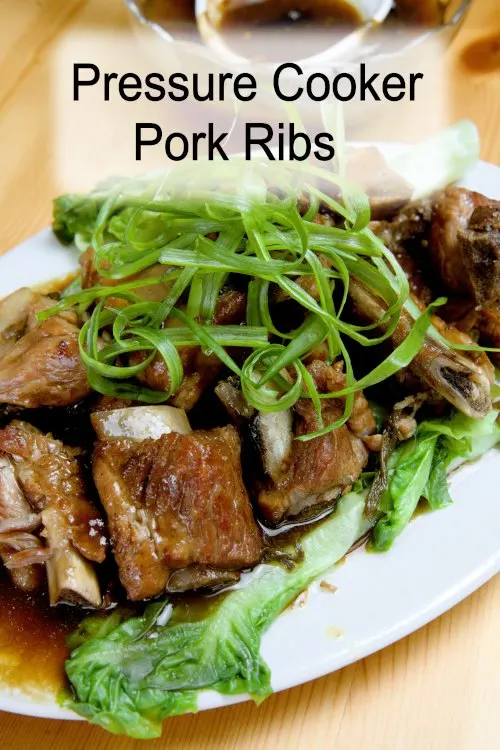
1. Blanch and brown the pork
The purpose of blanching the pork ribs is to eliminate the smell of pork that some people may find unpleasant. Wine, ginger, and green onions are used for this purpose while adding flavor to the pork. Chinese chefs commonly use this step, but it is not mandatory as some people aren’t bothered by the smell. In addition, certain pork is free from the unwanted smell. For example, Asian pork smells less ‘porky’ than Iberico pork.
Here are the steps:
- I need to cut the whole rack of ribs into short sections to fit into the multicooker. However, cutting the rack of ribs at home can be difficult since I do not have a butcher knife, so I ask my butcher to do it. The type of ribs to be used is very personal, as it can be either baby back ribs or short ribs. For me, the best ribs are any meaty ribs.
- Wash the pork ribs thoroughly with water to remove any dirt, debris, and broken bones.
- Next, bring a pot of water to a rolling boil and add two stalks of green onions, slices of ginger (one thumb size), and a large tablespoon of Chinese rice wine. Place the pork ribs into the boiling water and blanch them for about two to three minutes. Once done, remove the pork ribs and drain them in a colander or paper towel.
2. The spices used for Chiese-style pork ribs
Cinnamon sticks, star anise, cloves, and Chinese five-spice powder are used, just like cooking other similar Cantonese-style braised dishes. Five-spice powder is a combination of cinnamon, cloves, fennel, star anise, and Sichuan peppercorns. Although some of the components of the five-spice powder may repeat with the whole spices used, it helps to make the flavor more wholesome.
The amount of spices, as mentioned in the recipe, is not a strict rule. You can adjust the proportion of spices based on your preference. However, if you’re new to Chinese braised pork, the given amount of spices is a good starting point.
3. Other ingredients required to season the pork ribs
The seasoning ingredients include light soy sauce, Shaoxing wine, salt, and rock sugar. These ingredients are typically used in most Chinese braising recipes. Chinese rice vinegar or apple cider vinegar can be added, but it is optional.
Rock sugar is commonly used in Chinese braising as it adds a smoother texture to the gravy and gives the pork ribs a glossy finish. If you don’t have rock sugar, substitute it with brown sugar or any sugar available.
Note: This recipe is based on the traditional Chinese recipe. Certainly, you can use the same principle to prepare hot ribs with other flavors. If you’re looking to try different flavors beyond the traditional Cantonese, here are some options:
- For example, you can make Instant Pot ribs using a dry rub to marinate the ribs and add liquid smoke for a smoky flavor.
- Add a tablespoon of barbecue sauce to the braising liquid or Worcestershire sauce to change the flavor.
- Another way to improve the flavor is by adding some garlic powder, or better still, adding a few cloves of garlic to braise the pork ribs.
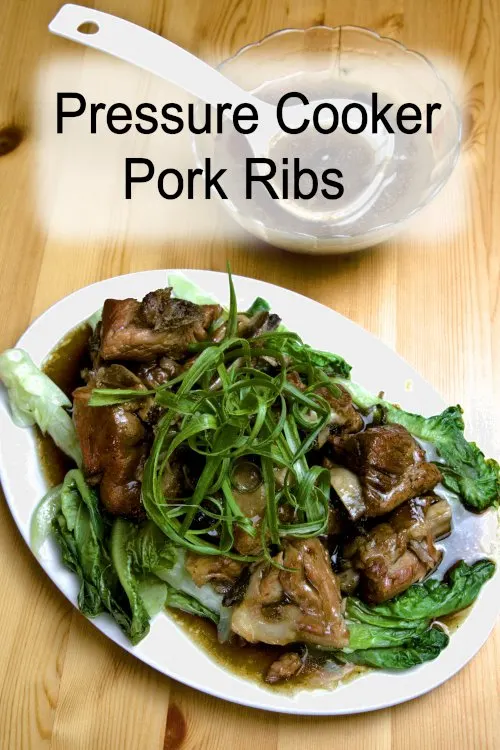
4. Brown the pork ribs
The cooking method is the most significant difference between the traditional stove-top and multi-cooker. Instead of using a deep fryer or a separate pan to fry the pork until golden before adding the water to braise the pork ribs, I will use the multi-cooker to complete the entire cooking process.
- First, I add vegetable oil to the multi-cooker bowl, turn on the sauteing option, and then sear the pork ribs.
- With the saute mode on, the multi-cooker will act as a pan on the stove,
- Brown the ribs on one side. When the underside of the ribs has turned color, flip them over to brown on the other side. Brown ribs have a better flavor after braising.
Initially, I was skeptical about the effectiveness of browning the ribs with the multi-cooker, but it turned out well. I’m happy with the result and the simplicity of not requiring different cooking utensils. Also, if you have an air fryer, you can use it to brown the pork ribs, although I prefer to do everything with the multi-cooker.
5. Braise the pressure cooker pork ribs
After the pork ribs have turned golden, add about a cup of water or until enough to submerge them halfway. Then, add the prepared spice mixture, seasonings, ginger slices, and green onions to the pot.
Once I have placed the meat inside the multicooker, close the lid and set it to the pressure cooking mode. This feature ensures that the liquid inside the pot won’t dry out, which can be problematic with stovetop cooking. High pressure cooking is also more effective as it only needs a fraction of the time than a slow cooker or on the stovetop to tenderize the meat.
After the multicooker completes the pressure cooking process, which takes 30 minutes, open the lid and check the pork ribs to ensure they are tender. Since there is a quick release button, I use it instead of waiting for it to release the pressure automatically from the multicooker, which takes longer.
I then check the doneness of the pork ribs to decide whether I need to increase the cooking time since the cooking time is set automatically. However, since they are already falling off the bone, there is no need to cook them any longer.
6. Thicken the gravy
The final step is to thicken the sauce.
- First, I need to remove all the tender ribs so they will not overcook while I thicken the gravy.
- Keep the lid open and initiate the sauce thickening mode of the multicooker. Keep stirring the cooking liquid until it reduces to half its original amount.
- Mix two teaspoons of cornstarch with two tablespoons of cold water to create a slurry. Then, stir it into the braising liquid to thicken the gravy.
- Before removing the pork ribs to serve, do a taste test to ensure everything is in order.
7. Related recipe for pressure cooker pork ribs
The beauty of using a multi-cooker lies in its simplicity. I will likely use it more often for my future recipes. Meanwhile, if you enjoyed this easy recipe, I suggest a few Chinese dishes that pair well with them.
- Bok Choy Stir-fry. What better way to prepare some vegetables to serve alongside the pork ribs? This way, you will have a complete and balanced meal with steamed rice or noodles.
- Chinese beef stew. If you don’t eat pork, try this Chinese-style beef stew recipe. It has a unique flavor due to using different seasonings and spices compared to braised pork ribs.
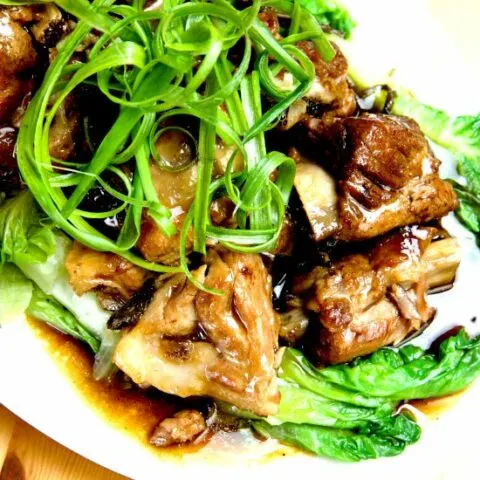
Pressure cooker pork ribs - easy fall-off-the-bone recipe
Here is an easy pressure cooker pork ribs recipe, Chinese style, that is fall-off-the-bone. Delicious and liked by everyone.
Ingredients
Ingredients (A) - Blanch the pork ribs
- 1kg g pork ribs, cut into single-bone pieces
- 5 slices ginger
- 2 stalks of green onions
- 1 tbsp rice wine
- Water to blanch the pork ribs
Ingredients (B)
- 5 slices ginger
- 2 stalks green onions, cut into 5cm length
- 2 cinnamon sticks
- 2 star anise
- 8 cloves
Ingredients (C)
- 2 tablespoons Shaoxing wine
- 3 tablespoons light soy sauce
- 1 tsp five-spice powder
- 1/2 tsp ground white pepper
- 40 g rock sugar
- 1.5 tsp salt
- Water is sufficient just to cover the ribs in the pan
Instructions
Blanch and brown the pork
- Cut the whole rack of ribs into short sections.
- Wash the pork ribs thoroughly with water to remove dirt, debris, and broken bones.
- Place all ingredients in A and blanch the pork ribs for about two to three minutes.
- Remove the pork ribs and drain them in a colander.
Brown the pork ribs
- Add vegetable oil to the multi-cooker bowl, turn on the sauteing option, and then sear the pork ribs.
- Brown the ribs on bothe sides.
Braise the pork ribs
- After the pork ribs have turned golden, add about a cup of water or until enough to submerge them halfway. Then, add Ingredients B and C to the pot.
- Close the lid and set it to the pressure cooking mode.
- After the multicooker completes the pressure cooking process, open the lid and check the pork ribs to ensure they are tender.
- Remove the pork ribs and let the liquid remain in the pot.
Thicken the gravy
- Initiate the sauce thickening mode of the multicooker.
- Keep stirring the cooking liquid until it reduces to half its original amount.
- Mix two teaspoons of cornstarch with two tablespoons of cold water to create a slurry. Then, stir it into the braising liquid to thicken the gravy.
- To serve, place the pork ribs on the serving plate and drizzle the gravy on top.
Recommended Products
As an Amazon Associate and member of other affiliate programs, I earn from qualifying purchases.
-
 Colander Set - 2 Collapsible Colanders (Strainers) Set By Comfify - Includes 2 Folding Strainers Sizes 8" - 2 Quart and 9.5" - 3 Quart Red and Grey
Colander Set - 2 Collapsible Colanders (Strainers) Set By Comfify - Includes 2 Folding Strainers Sizes 8" - 2 Quart and 9.5" - 3 Quart Red and Grey -
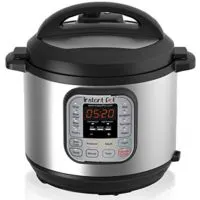 Instant Pot DUO60 6 Qt 7-in-1 Multi-Use Programmable Pressure Cooker, Slow Cooker, Rice Cooker, Steamer, Sauté, Yogurt Maker and Warmer
Instant Pot DUO60 6 Qt 7-in-1 Multi-Use Programmable Pressure Cooker, Slow Cooker, Rice Cooker, Steamer, Sauté, Yogurt Maker and Warmer -
 Frontier Five Spice Powder, 1.92-Ounce Bottle
Frontier Five Spice Powder, 1.92-Ounce Bottle -
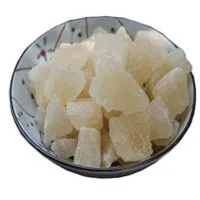 Helen Ou @ Guangxi Specialty: Traditional Pure Brown Rock Sugar 17.6oz
Helen Ou @ Guangxi Specialty: Traditional Pure Brown Rock Sugar 17.6oz
Nutrition Information:
Yield: 3 Serving Size: 1Amount Per Serving: Calories: 1521Total Fat: 112gSaturated Fat: 34gTrans Fat: 1gUnsaturated Fat: 50gCholesterol: 375mgSodium: 2623mgCarbohydrates: 50gFiber: 7gSugar: 17gProtein: 80g
This data was provided and calculated by Nutritionix on 1/5/2024

Shanthi
Thursday 11th of January 2024
My my kitchen job so easy!!! Thanks.
Ruby Yeoh
Sunday 7th of January 2024
Thanks for another interesting recipe which I find that its easy to try out one of these days when I am free.Will revert to you when I have tried your tasty recipe.
KP Kwan
Saturday 6th of January 2024
Hi, this is KP Kwan. Thank you for reading my recipe. Please feel free to ask any questions or leave comments. I’ll respond as soon as possible.